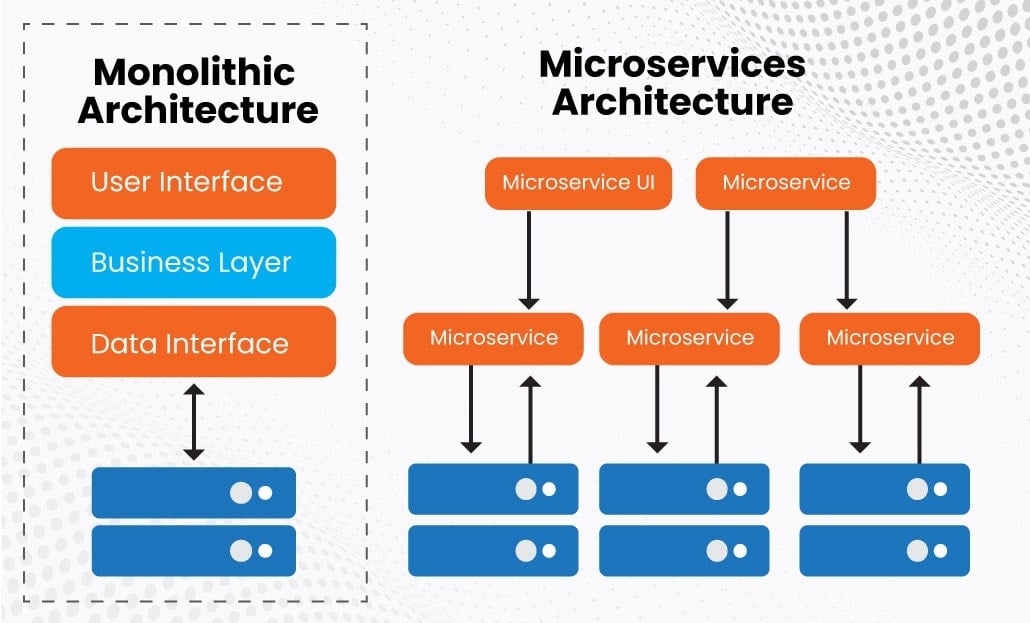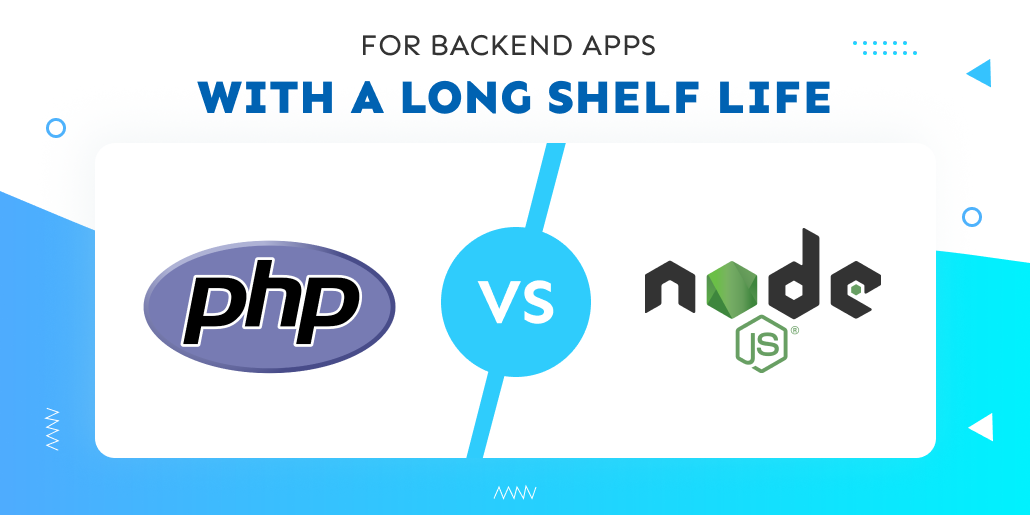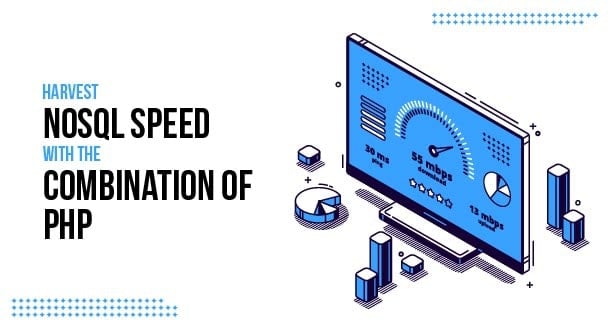As per a TechRepublic survey, 73% of organizations claimed to be adopting microservices.
With all the buzz about companies adopting microservices, you might be asking. "Should we shift to microservice architecture?"
The answer is more complex.
As per Farley, co-author of Continuous Delivery with Jez Humble, people are implementing microservices when, in fact, they are not microservices. Things like containers and APIs have become synonymous with microservices.
So, before jumping on the boat, let's try to understand what a monolithic and microservice is and which is best for you.
What is Monolithic Architecture?
Monolithic architecture is an architecture built on a single code base. This code base holds everything from business logic, data, and related code.
Monolithic Architecture has three parts:
- Database - Stores all data
- Client-side user interface - Stores HTML or JS pages run from the browser.
- Server-side app - handles users’ requests and executes logic.
To understand Monolithic architecture, let’s take an example. Imagine you are building a home, but only with one enormous piece of wood. Everything from walls, windows, and little details will be made only from that piece of wood. This happens in Monolithic architecture; every part of an app is built on a single code base.
Benefits of Monolithic Architecture
- Easier debugging. Since only one codebase exists, developers don't have to guess where the error comes from. This makes debugging easier.
- Tried and tested. Monoliths have been used for a long time and have worked wonderfully for many organizations. As compared to newer, untested services, monoliths are a safe option.
Drawbacks of Monolithic Architecture
- Not suitable for DevOps: Since DevOps is about breaking down large parts and optimizing the process, in such a case, it's challenging to break down monolithic architecture.
- Harder to scale as there is no flexibility in scaling individual elements.
- Unable to cope with technological advancement. Since the entire application runs on a single technology, any technology change will affect the whole application.
Unreliable. A single bug will affect the entire application as the code is centralized.
What is Microservices architecture?
Microservices is a modern modular architecture that divides one app into small or micro parts. Each of these microservice runs its processes. To communicate with other services, microservice often use APIs.
Microservices architecture is also loosely coupled, meaning if one-part breaks, the other remains stable. As per Gartner, software engineers generally prefer microservices to enable continuous delivery.
Benefits of Microservices Architecture
- Suitable for Agile teams: Micro-servers make it easy for Agile teams to deploy code frequently.
- Faster releases due to continuous deployment: Instead of waiting for the right time to update the app, you can push updates daily.
- Highly reliable: Enables changes to a part of the app without bringing other parts down.
Drawbacks of Microservices Architecture
- Exponential cost. Each microservice has its testing center, team, and hosting architecture, which can explode operating costs. As the number of microservices grows, so do the number of units and overhead costs.
- Debugging is a massive challenge. Since a single function can run across many microservices, finding the errors is much more complicated.
Technologies to Build Monolithic Architecture Vs. Microservice Architecture
|
Monolithic |
Microservices |
|
|
Programming languages |
Java, C#, Python, or Ruby can be used to write the code for the entire application. |
Flexibility to use almost any kind of programming language. |
|
Frameworks |
Spring (for Java), .NET (for C#), Django (for Python), or Ruby on Rails (for Ruby) |
Spring Boot, Express.js, Flask, or Ruby Sinatra |
|
Databases |
MySQL, PostgreSQL, Oracle, or MongoDB |
MySQL, PostgreSQL, MongoDB, or specialized databases like Elasticsearch or Redis. |
|
Communication protocols |
None |
REST (Representational State Transfer), gRPC (Google Remote Procedure Call), or messaging systems such as RabbitMQ or Apache Kafka facilitate communication between microservices. |
|
Containerization and orchestration |
None |
Docker and Kubernetes |
Now that we have cleared what monolithic and microservice architecture is let's see which one is right for you.
When to Use a Monolithic Architecture and When to Use Microservices?
Before choosing the right one, here are a few factors to see.
- Complexity of project: Monolithic architecture is suitable for simple apps like essential e-commerce stores, a blog, or a website. Microservice architecture can be opted for if the app is highly complex and has high traffic—for example, Netflix.
- Budget: Budget is another crucial factor to consider. Microservices architecture demands highly specialized teams with prior experience with containers and the microservice ecosystem. Moreover, each microservice needs its team.
- Speed: If teams want a higher speed of development and deployment, microservice is more suitable.
- Growth of organization: Microservices will help you scale exponentially if your organization grows faster.
Is Microservices Architecture Better Than Monolithic Architecture?
In conclusion, the choice between monolithic architecture and microservices ultimately depends on your business’s specific needs and goals. Monolithic architecture offers simplicity and ease of development, while microservices provide scalability and flexibility.
Consider your project size, team capabilities, future growth plans, and resource constraints to make an informed decision. Remember, there is no one-size-fits-all solution, and what works best for one organization may not be ideal for another. Instead, embrace the power of understanding and choose the architectural approach that empowers your business to thrive in the ever-evolving digital landscape.
Transitioning to Microservices Made Easy with Clarion Technologies
Your business might be growing at a faster rate than you can scale. This is when you need a talented workforce's help to build a robust microservice architecture so you can grow exponentially. Connect with like-minded developers from Clarion Technologies and build a highly scalable system.









%20-%20how%20to%20choose%20the%20right%20tech%20stack%20for%20web%20and%20app%20development.jpg)